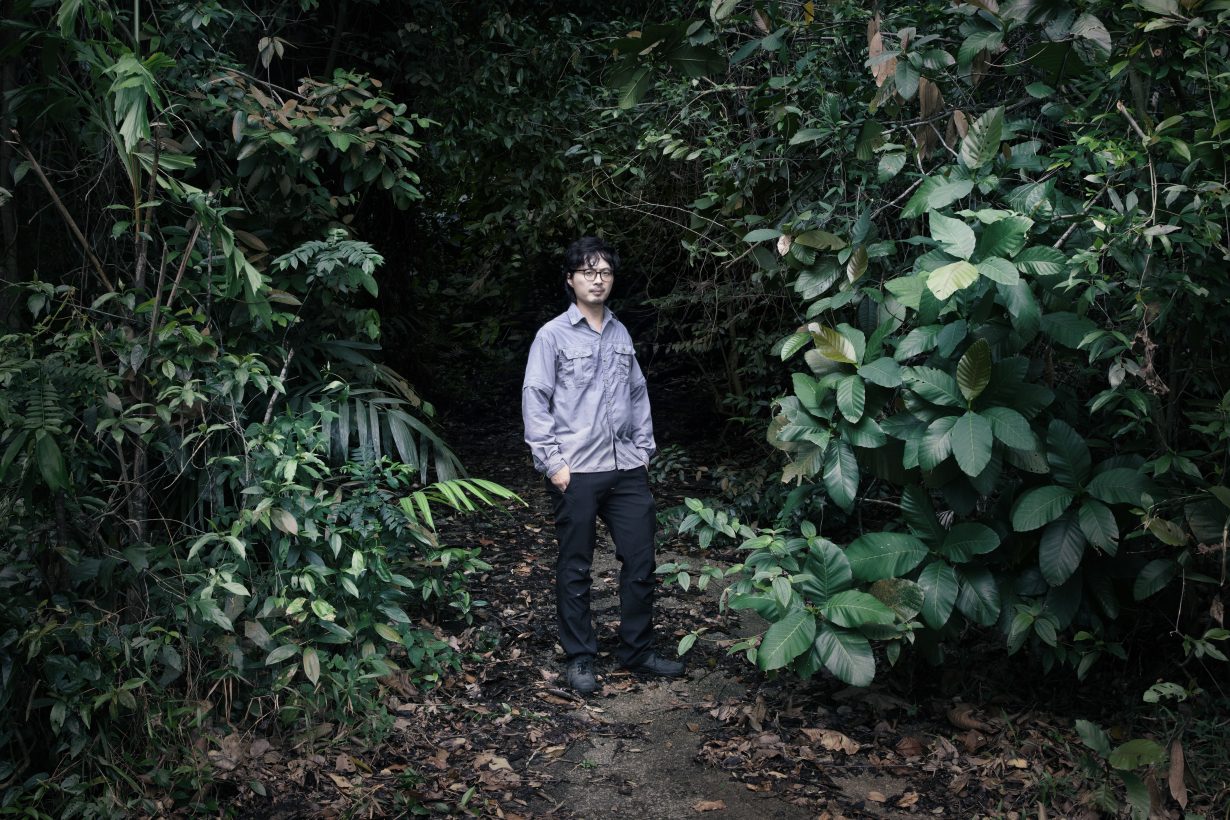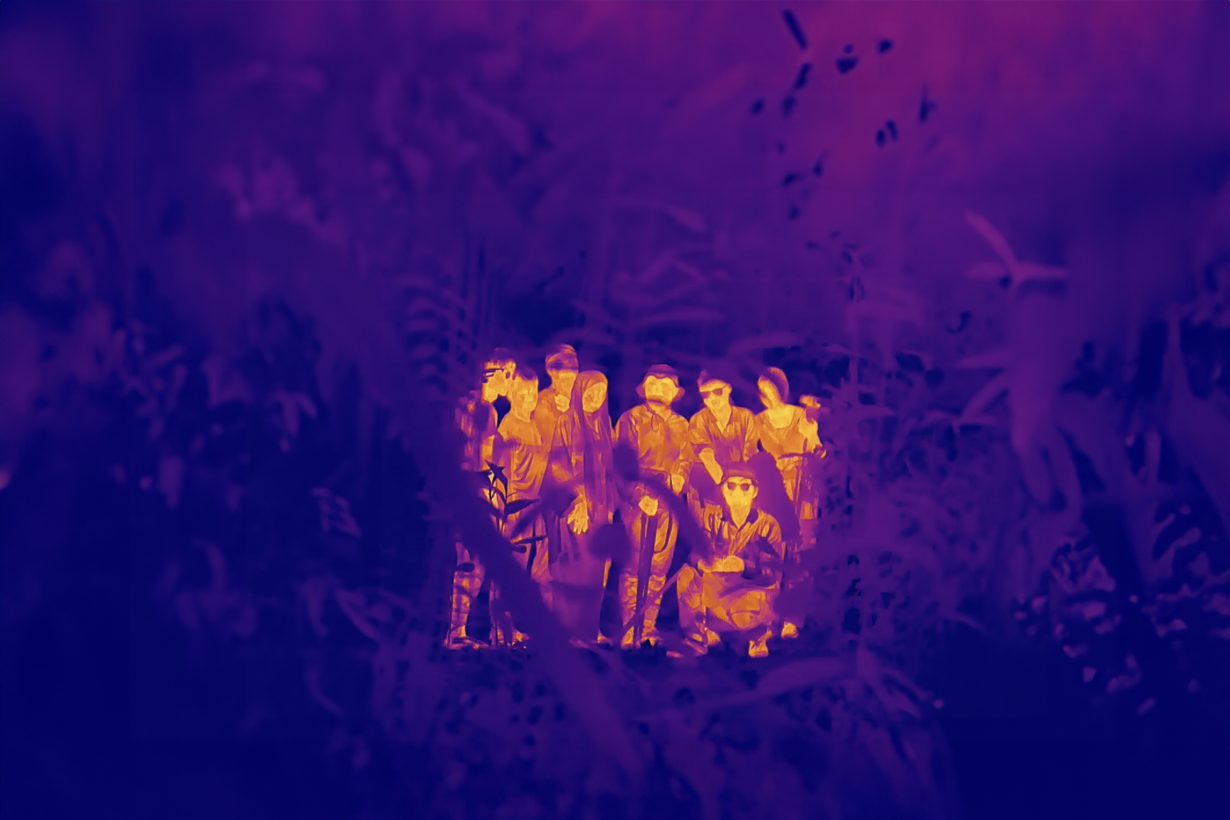ArtReview sent a questionnaire to artists and curators exhibiting in and curating the various national pavilions of the 2024 Venice Biennale, the responses to which will be published daily in the leadup to and during the Venice Biennale, which runs from 20 April to 24 November.
Robert Zhao Renhui is representing Singapore; the pavilion is in Arsenale – Sale d’Armi, Campo della Tana 2169/F.

ArtReview What do you think of when you think of Venice?
Robert Zhao Renhui Art, mostly. I’ve only visited the city because of the art and architecture biennales.
AR What can you tell us about your exhibition plans for Venice?
RZR My exhibition is titled Seeing Forest, and it aims to create an imaginal forest space inspired by the secondary forests of Singapore. Secondary forests are forests that have sprung up over land disturbed by human activity. Singapore, which is known as a ‘City in Nature’, has lots of manicured park spaces and roadside trees, but not a lot of wild, unmanaged patches of greenery which are just allowed to be. I’m particularly fascinated by secondary forests because, unlike developed land covered with concrete, they are gentle on history. They don’t erase the past but allow traces from different periods to coexist, from bricks and pottery shards to durian and rubber trees from abandoned villages. To me, secondary forests are also frontier zones, radically hospitable places that house a mix of native and invasive species; situated on the margins of the city, they are also good hiding places for illegal immigrants and illicit activities like jungle brothels.
For the past eight years, I have been placing camera traps (cameras that are triggered by movement) in some secondary forests, and capturing footage of the wildlife inside. I focus on areas that have traces of human habitation, such as an old cement drain now broken by the force of rainwater to become a stream and an abandoned dustbin that is now used as a watering hole. The footage and photographs from these cameras form the key element of my exhibition.
The Pavilion will house three new works. The main work is a two-channel video called The Owl, The Travellers and the Cement Drain (2023), a filmic essay about the secondary forest space, composed of scenes from the forest – its trees and animals, migrant workers’ abandoned tents, migratory birds from a concrete drain – and an unstable, fluctuating narrative of two human characters as they journey through it. The second work is a sculptural video installation, Trash Stratum (2023), which comprises 12 screens showing various creatures visiting the abandoned dustbin. The screens are arranged around a deconstructed cabinet of curiosities. Lastly, Buffy (2023) is a largescale digital print of a bird native to Southeast Asia, the buffy fish owl, with its back turned to us.
AR Why is the Venice Biennale still important, if at all? And what is the importance of showing there? Is it about visibility, inclusion, acknowledgment?
RZR All of the above. To me, the Venice Biennale is like a flower show. It gathers flowers from different parts of the world and showcases them outside of their home contexts. There’s a certain artificiality to this kind of pageant, but it can also be an eye-opening exercise for the viewer.
AR When you make artworks do you have a specific audience in mind?
RZR Only to an extent that I would consider to be quite superficial, which is an issue of presentation. When I present artworks, I have to take into account the context in which I’m showing. Something that might be obvious to a local audience in Singapore might not be obvious to audiences elsewhere. This can be remedied with external texts, or I might make some minor tweaks in my work.
But on the level that actually matters, which is when I’m actually creating work, I don’t create with an audience in mind at all. I listen to the work and try my best to get out of the way.

AR Do you think there is such a thing as national art? Or is all art universal? Is there something that defines your nation’s artistic traditions? And what is misunderstood or forgotten about your nation’s art history?
RZR I don’t think there is national art but there are various national art histories (which can themselves challenge the notion of a ‘nation’, by taking into account émigré artists, regional connections and so on). As a principle, I don’t believe in definitive accounts of art histories that lead to a canon being formed; I think art histories are creative endeavours, and are made up of different stories and trajectories that we can trace from the past.
AR If someone were to visit your nation, what three things would you recommend they see or read in order to understand it better?
RZR The photographs of Nguan, who shows scenes of Singapore in a tender, honest light.
Singapore GaGa (2005), a film by Tan Pin Pin, about the soundscape of Singapore. Actually, come to think of it, anything by Tan is great, because she chronicles Singapore’s history and contemporary life with equal parts sympathy and criticality.
And A Land Imagined (2018), a film by Yeo Siew Hua, a hard-to-describe detective film that is about land reclamation and migrant life. I found it strange and compelling and also very revealing about the margins of life in Singapore.
AR Which other artists have influenced or inspired you?
RZR Mindaugas Survila, the director and cinematographer of The Ancient Woods (2017), an astounding film set in one of the last remaining patches of old growth forest in Lithuania. It was a hi-def film that moves from forest to cave to water and back to the lone human living on the edge of the forest. The flow of the storytelling from nonhuman to human and back again, the stunning footage that must come from years of patient observation, and the generosity of the filmmaker’s worldview that celebrates the wonder of the living world are huge inspirations to me. I was utterly blown away.
AR What, other than your own work, are you looking forward to seeing while you are in Venice?
RZR I’m looking forward to seeing the main exhibition, Foreigners Everywhere. By coincidence, my show also documents invasive plant and species, as well as the activities of migrants living in the forest – so there are parallels with the overall theme, and I’m curious to see how else the idea will play out in other works.
The 60th Venice Biennale, 20 April – 24 November